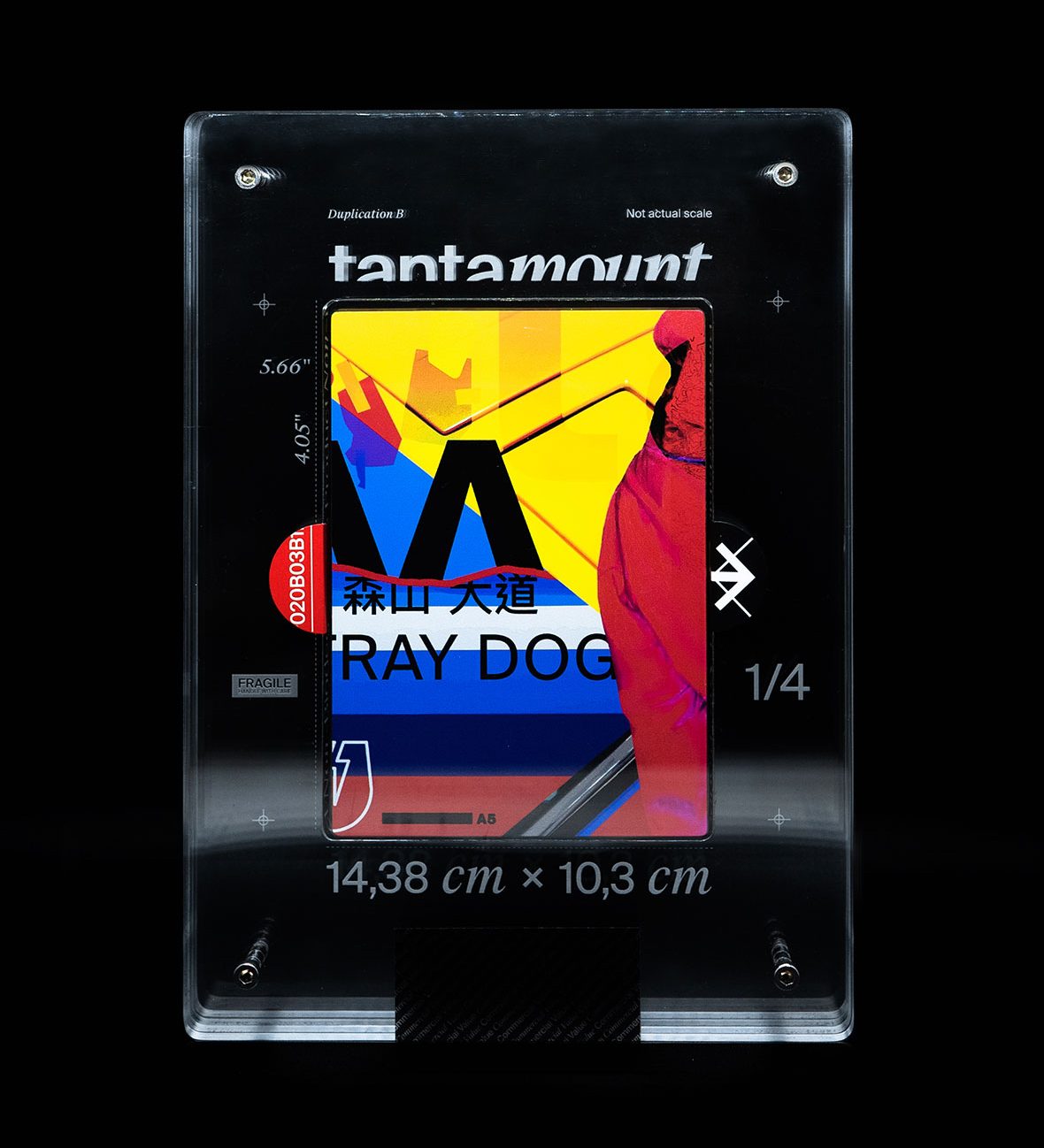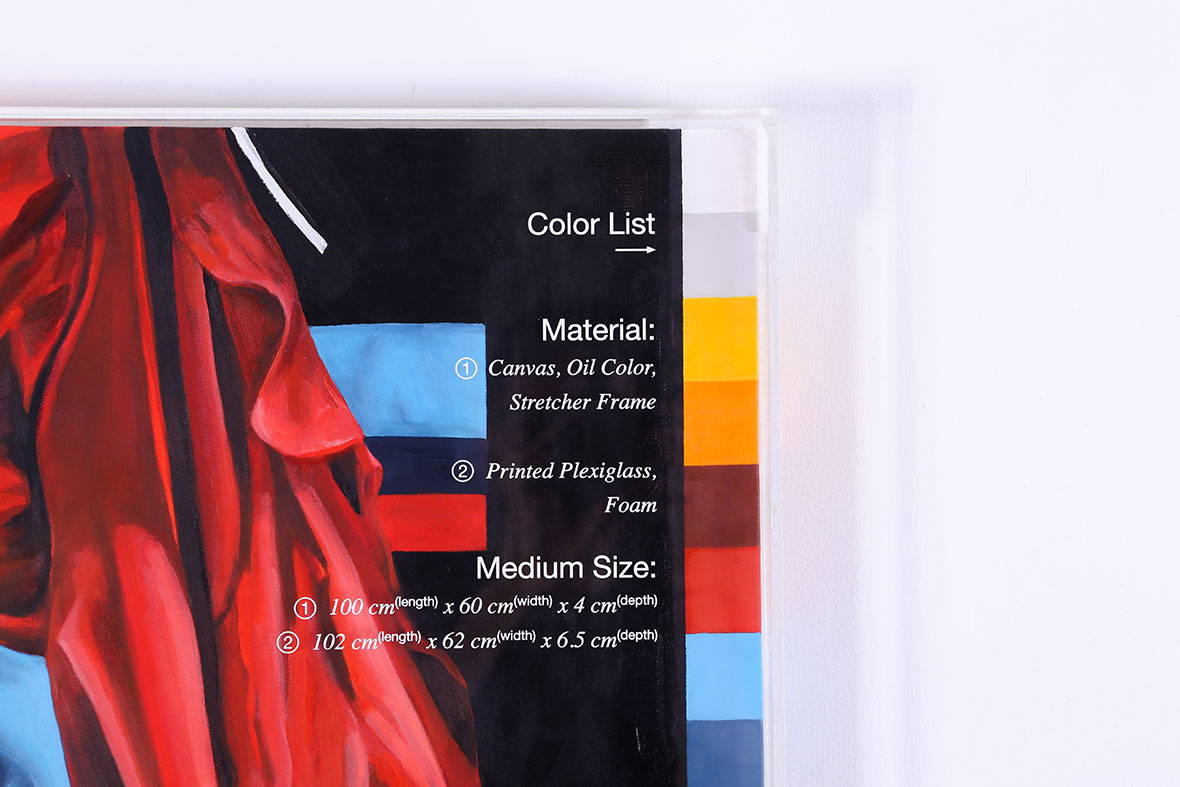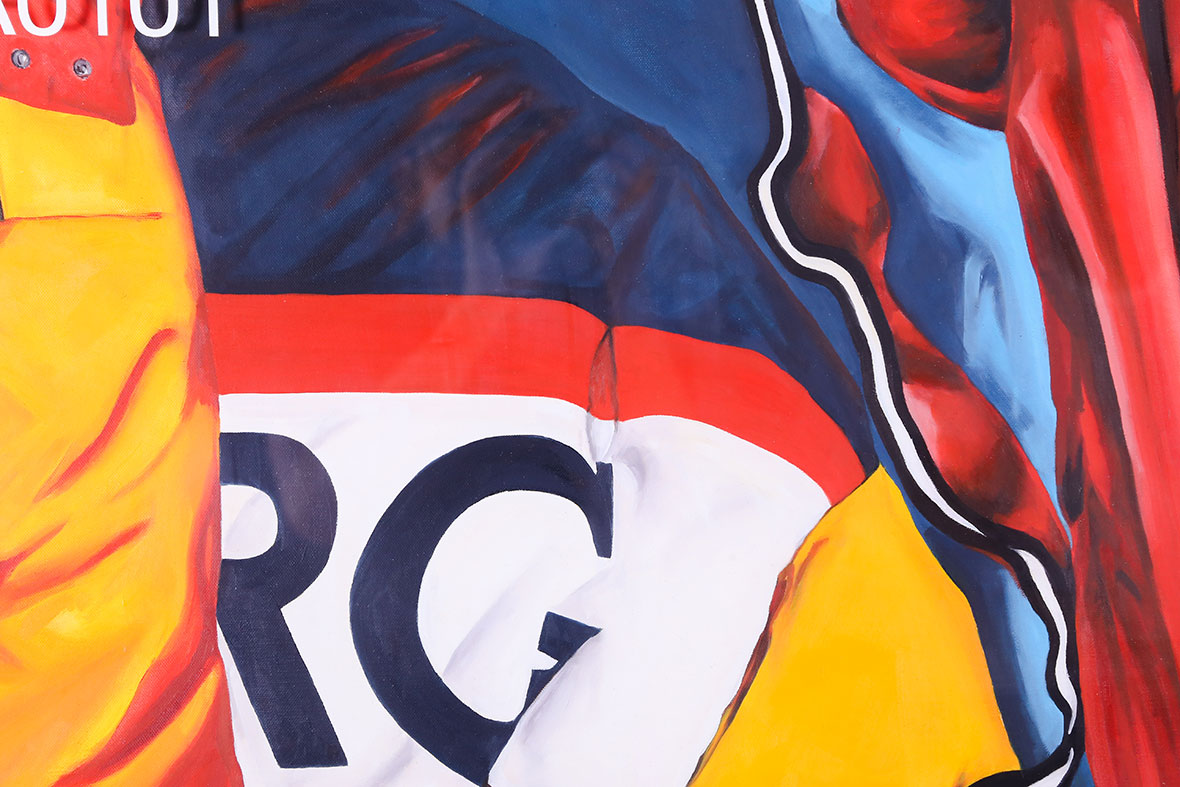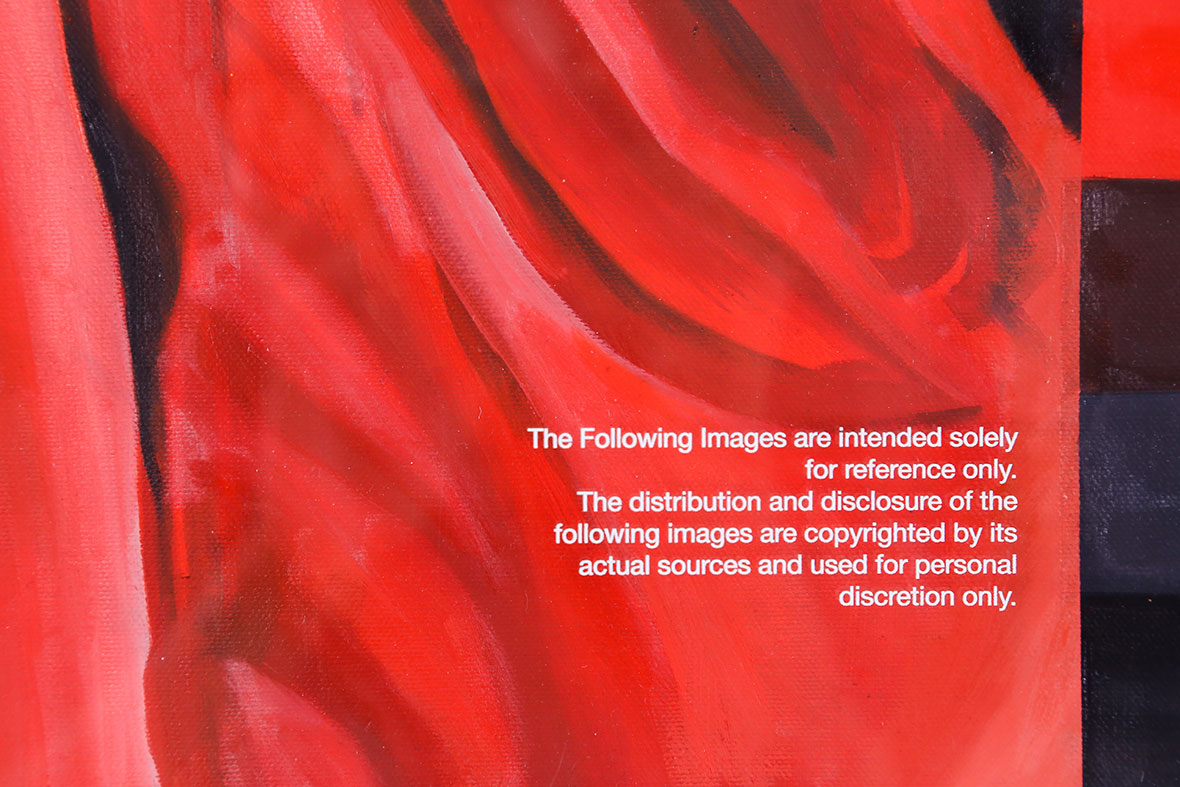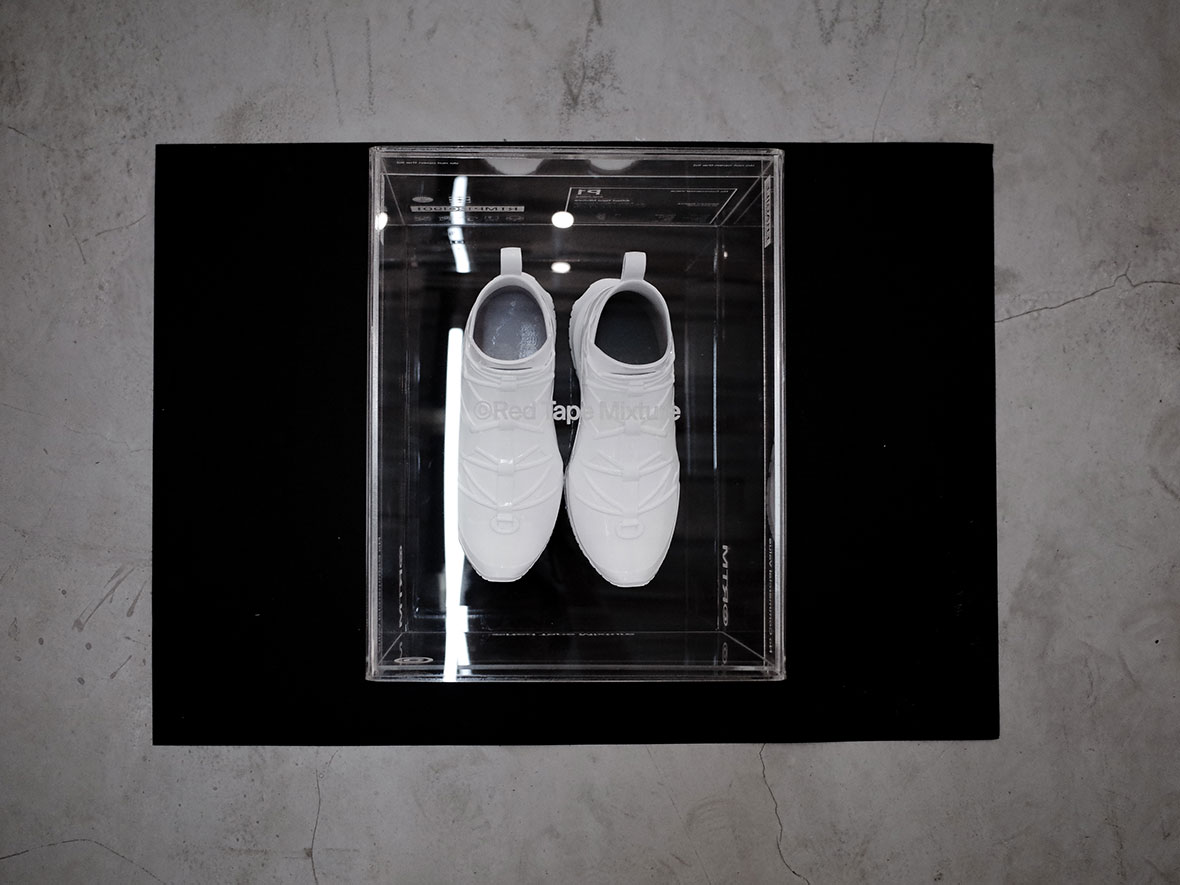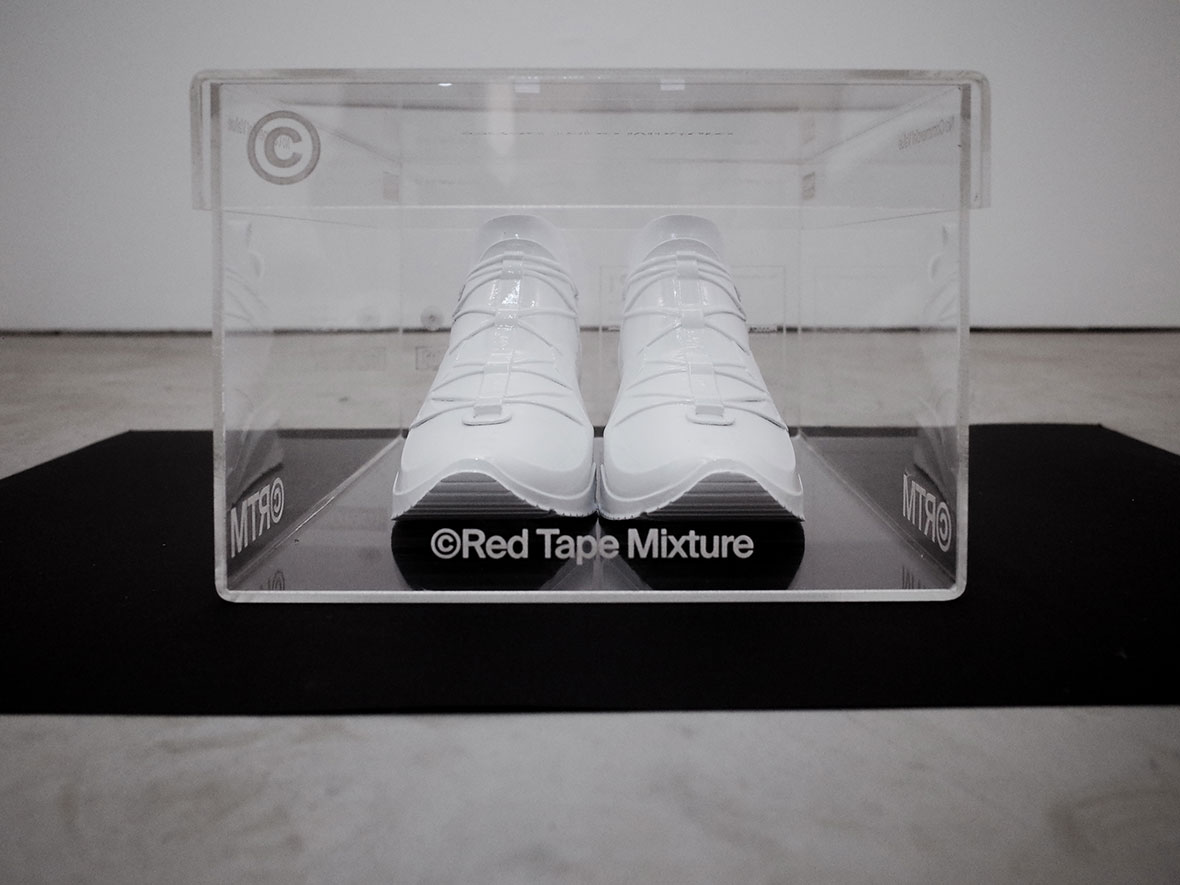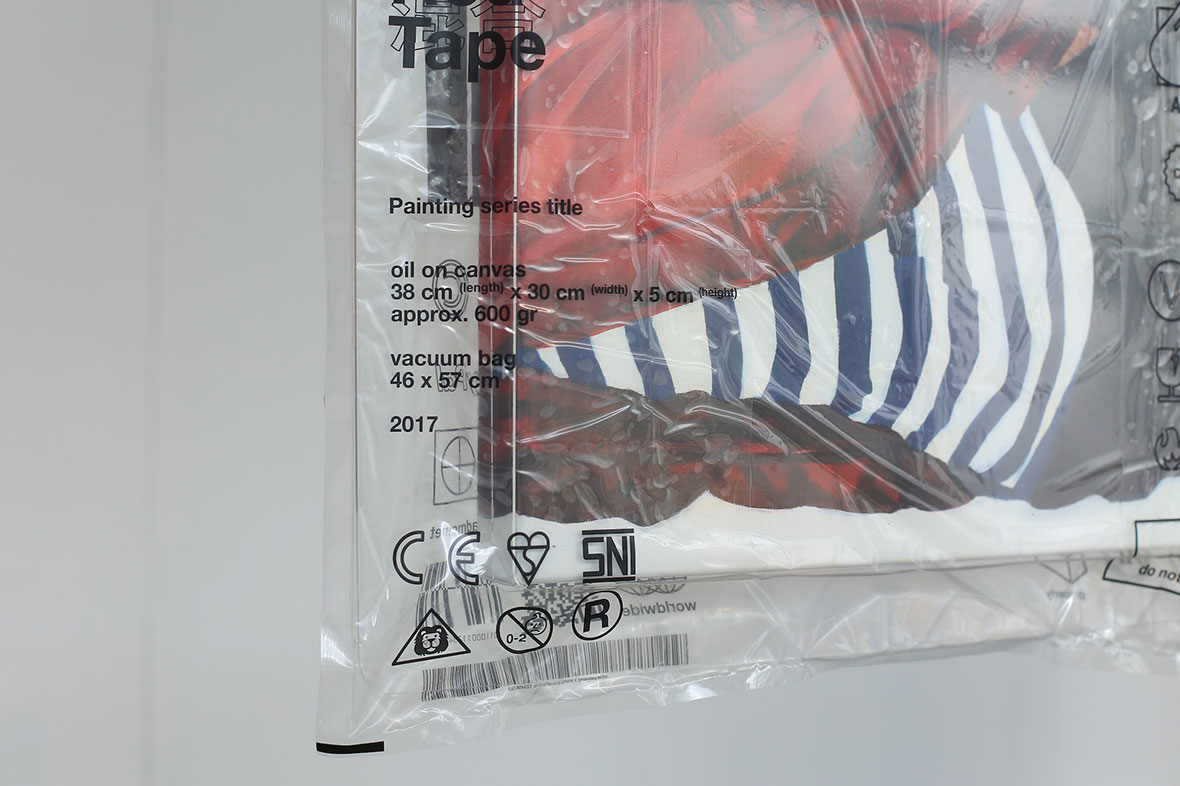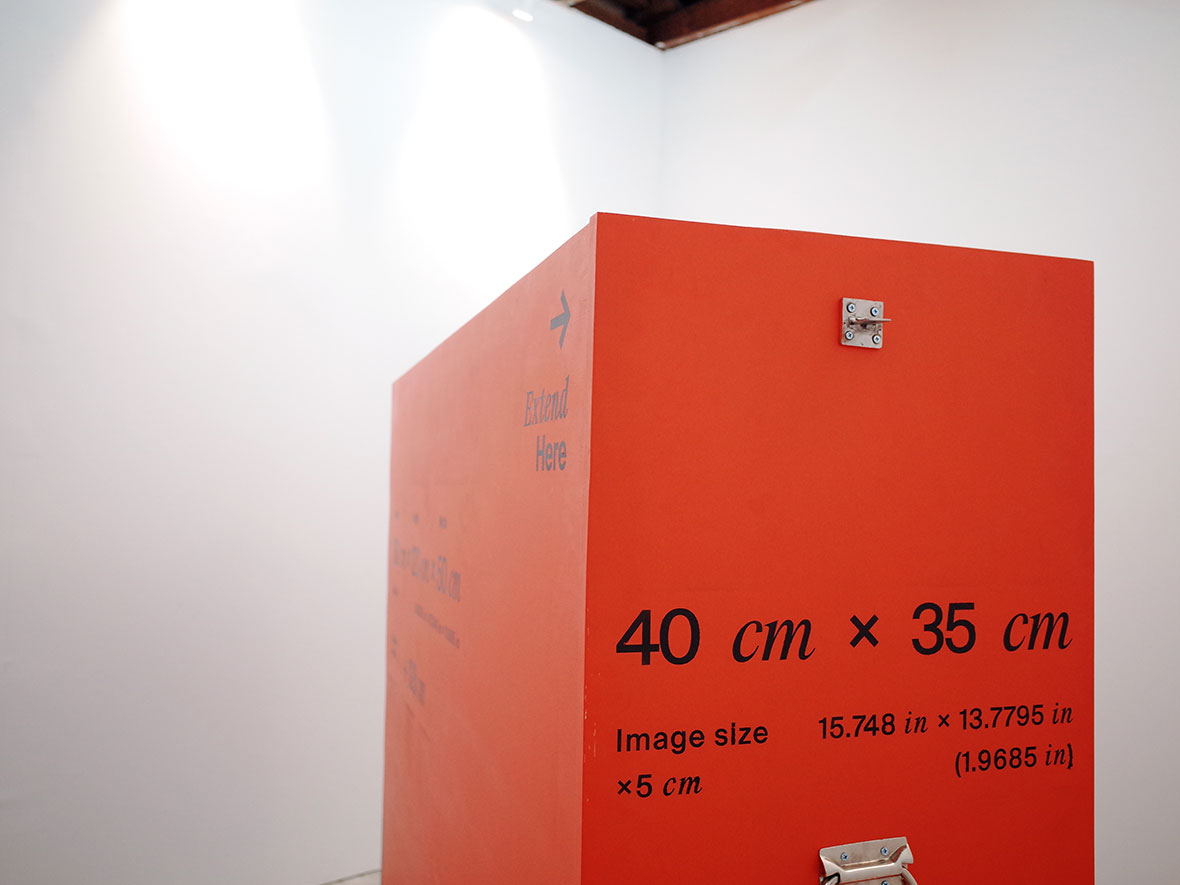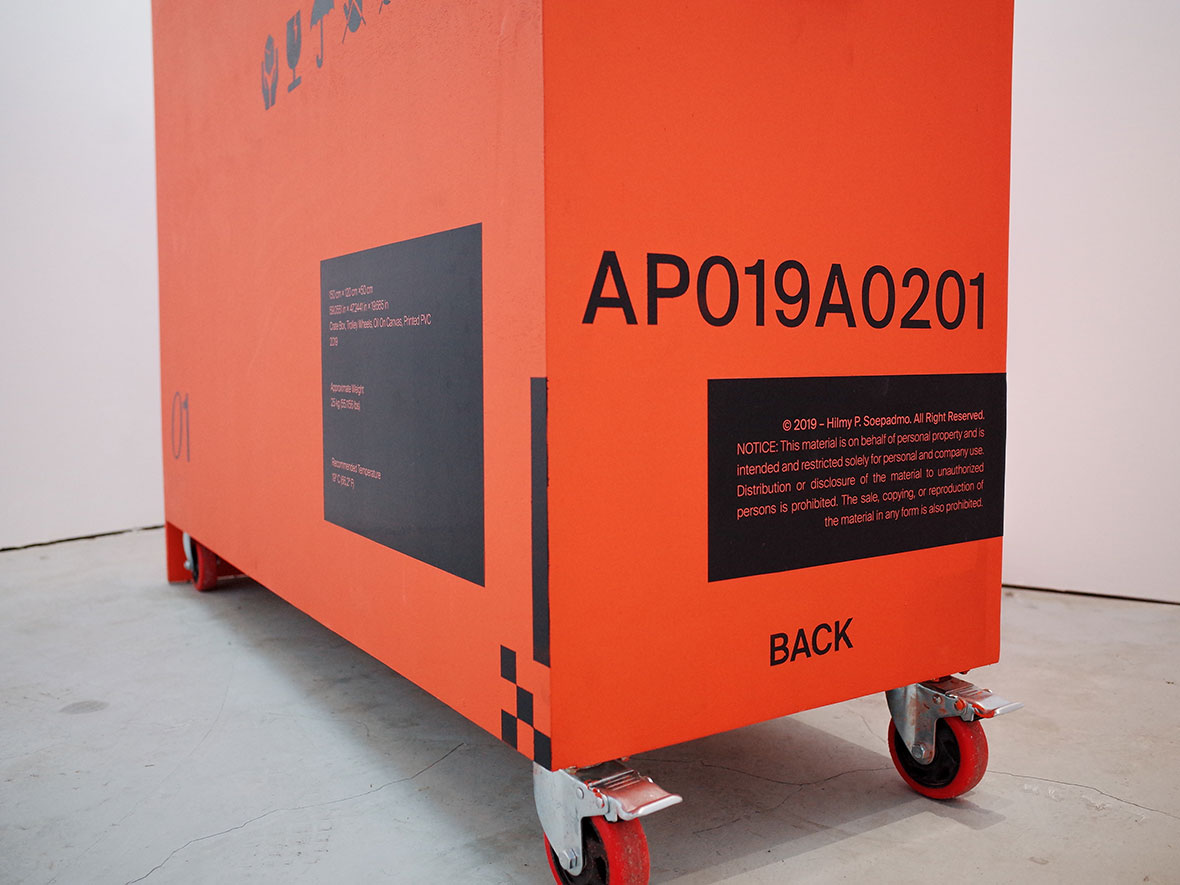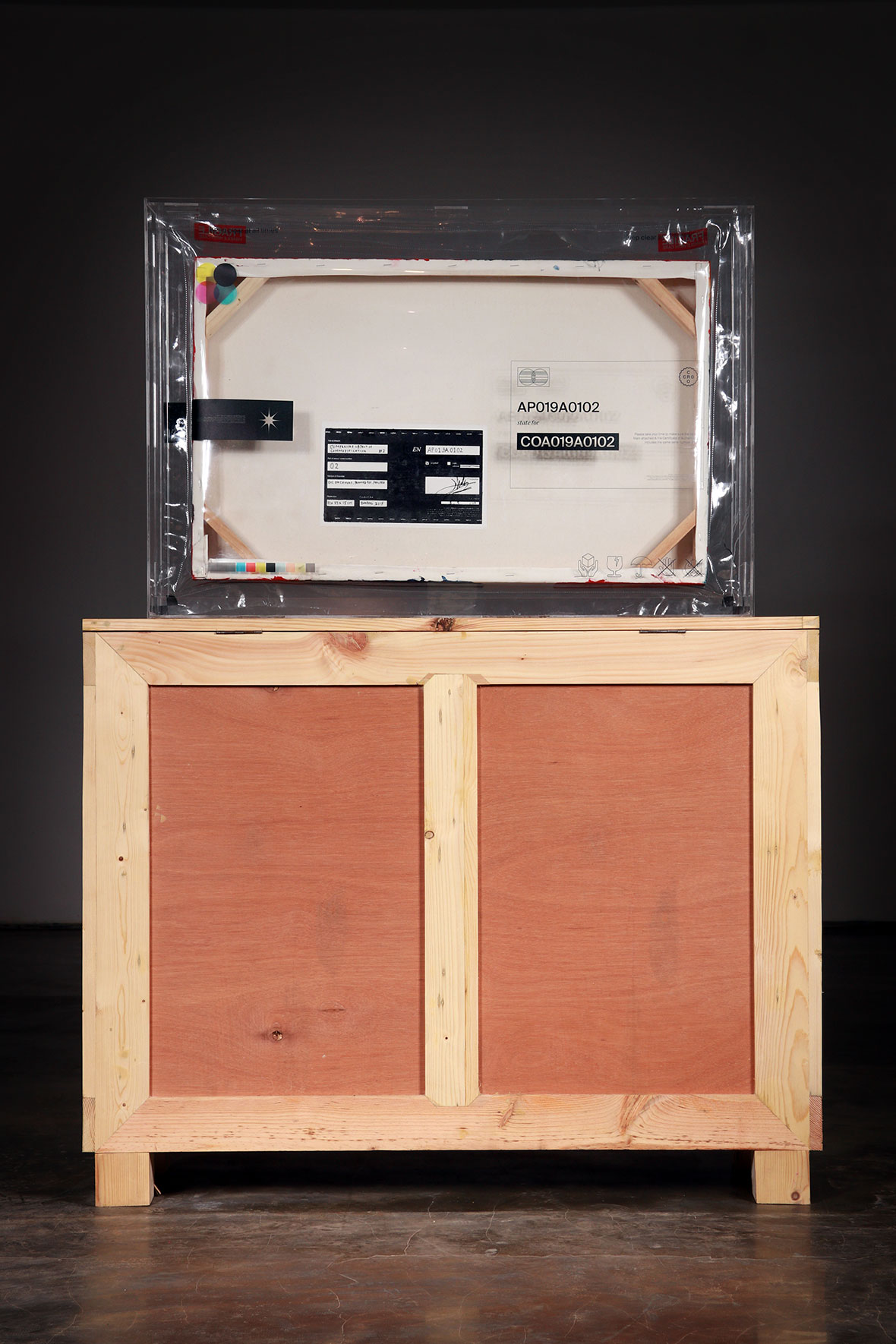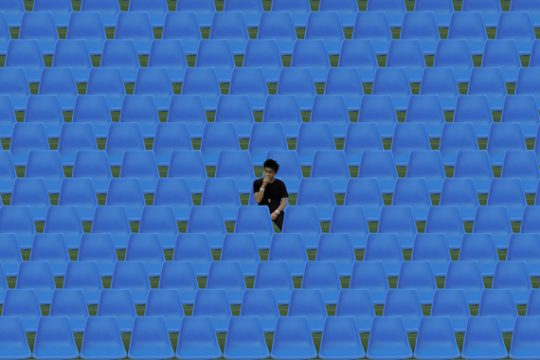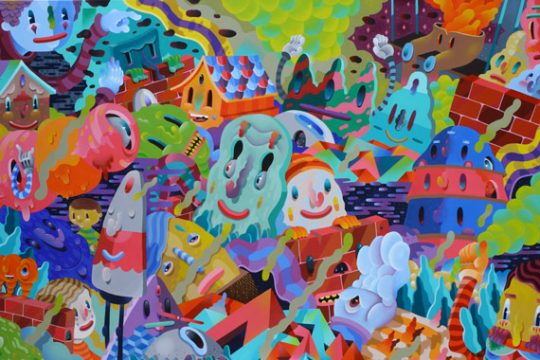
In modern times, the distinction between a product and a work of art can be blurry. The commodification of art and its increase in accessibility in recent years have played a large part in this shift. With the proliferation of terms like “wearable art” and “art collectibles”, how should art be treated as a product? In Hilmy Pratama Soepadmo’s works, the two are one and the same.
“Why do you like to shop? Why do we like to buy things?” Soepadmo asks. These are the questions foundational to the Indonesian artist’s works, which often feature logos, markings, and products from renowned fashion labels, positioned to be just barely noticeable. These elements give nod to Soepadmo’s own tastes while inviting reflection on today’s consumerist culture. “The visual markers in my works act as an entry point,” he explains. “Once the viewer perceives something they recognize, they will be more receptive towards the entirety of the work.”
在当代,商品和艺术品之间的界限变得很模糊,这种转变在很大程度上可以归咎于近年来艺术的商品化和普及化。随着 “穿戴式艺术” 和 “艺术收藏品” 这些词语的频繁出现,人们开始思考应该如何将艺术转化为商品。在印尼艺术家 Hilmy Pratama Soepadmo 的作品中,艺术与商品被视为一物。
“你为什么喜欢购物?人们为什么不停地买买买?”Hilmy 问道。这些问题为他提供了创作根基,品牌标志、标签以及知名时尚品牌商品都是他作品中常见的元素,并且毫无保留地出现在作品中。既体现了 Hilmy 自己的味口,同时也引发人们对现今消费文化的反思。“视觉和包装是我的切入点。”他解释说。“一旦观众认出作品中有自己熟悉的元素,他们会更容易接受整个作品。”
Asked whether his works are a critique of consumerism, he insists they’re not, and he’s well aware of his position as a consumer. “Our relationship with capitalism is much more complex than just saying ‘Buying things is bad. Abstaining from consumerism is good,’” he says. “It’s not that black and white. Yet at the same time, I want to raise some questions about our pattern of consumption. Why do we buy so much stuff? Are we informed enough about the things we are consuming?” Rather than simply criticizing or celebrating consumerism, he offers a nuanced take on being a conscious consumer. He questions whether we buy things out of necessity or if other factors are at play. Furthermore, he revealed that he has no idea whether people bother to understand the products they have—as simple as washing clothes according to its instructions—or if they buy things just for the sake of consuming. His works express what it means to be an artist in the midst of commerce and commodification.
当被问及他的作品是否是对消费主义的批判时,他坚决地否认了,并清楚地表明自己也是一名普通的消费者。“我们与资本主义的关系其实很复杂,不能单纯地否认购物,亦不能认为杜绝消费就是好事。”他说,“这不是非黑即白的问题。但同时,我也会对人们的消费方式提出一些质疑。我们为什么要买这么多东西?我们是否真正了解我们所消费的事物?”
没有一味地批评或鼓励消费主义,Hilmy 通过巧妙的方式提醒人们做一个有意识的消费者。他希望通过作品能让人们思考,我们究竟是出于必要而购物,还是由其他因素引起。此外,他还好奇,人们在购物时,会不会花心思去了解所购买的产品(最简单的例子就是按照衣服标签的洗涤说明来洗衣服),抑或是纯粹为了消费而购物。他的作品体现了一位艺术家身处商业社会和商品化时代的思辨。
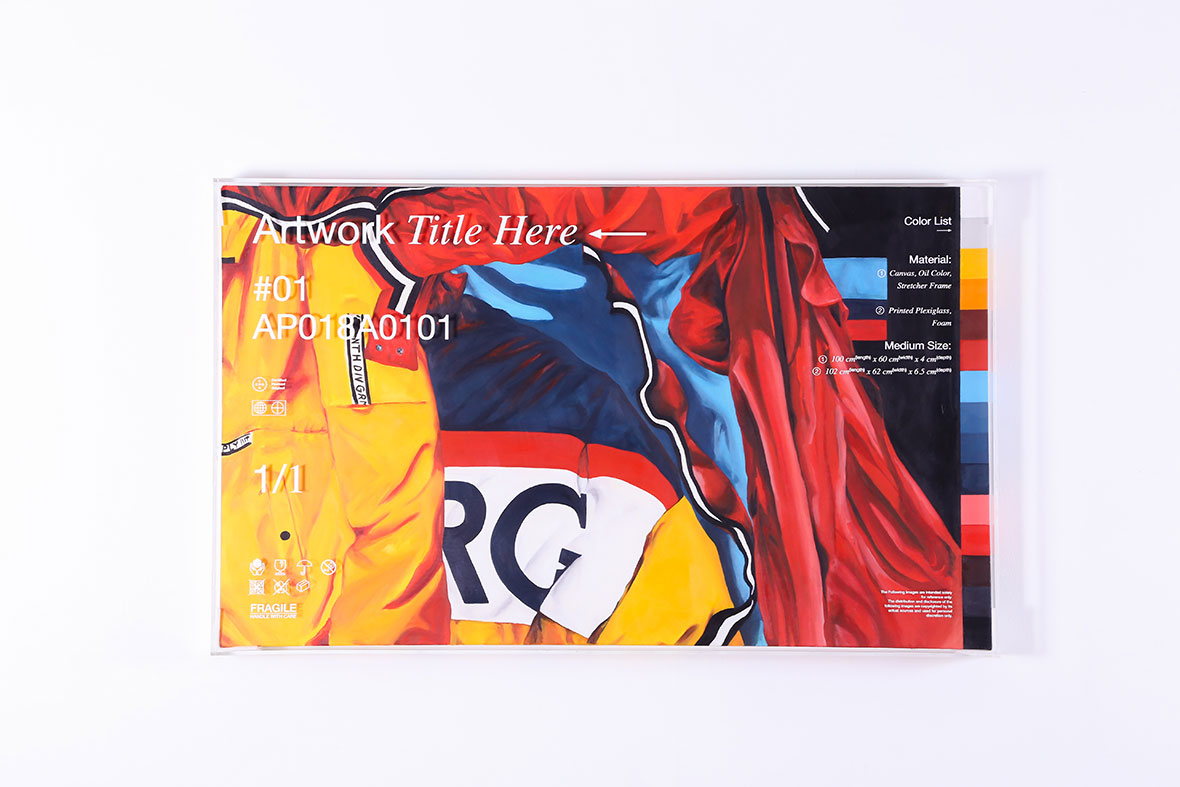
The consumption of fashion is of particular interest to Soepadmo. While clothing is a basic need, it serves more purpose than acting as a barrier between our skin and surroundings. Beyond its aesthetic value, clothing has a social meaning: people showcase their identity, value, and tastes through what they wear. This duality between practical and decorative is akin to how art is being perceived by its audience: does art exist solely for artistic appreciation or should it have derivative functions with greater societal values?
In the conception of his works, Soepadmo positioned himself as a consumer first, questioning what he expected from a product. His approach in fulfilling those expectations comes from another side of his professional work; graphic design. His works are as much of a product as it is an artwork to him since he incorporated the same treatments to his projects the same way a designer would to a product.
时尚领域消费也是 Hilmy 特别关注的主题。虽然衣服是一项人们基本的需求,其除了为皮肤提供与外界环境隔离的屏障之外,衣服还有更多其他的用途。超越美学价值,服装更具有一定的社会意义:人们通过服装展示身份、价值和品味,因而同时兼备了实用性与装饰性。这种双重性也映射着人们对艺术的看法:艺术品除了供人们欣赏之外,是不是还应该具有一些衍生的社会价值?
在构思作品时,Hilmy 首先将自己定位为消费者,思考对一件产品的期望;然后,运用自己的平面设计专业,将这些 “期望” 兑现。他按照设计师打造商品的方式来创作自己的作品。对他而言,他的作品既是艺术品,也是商品。
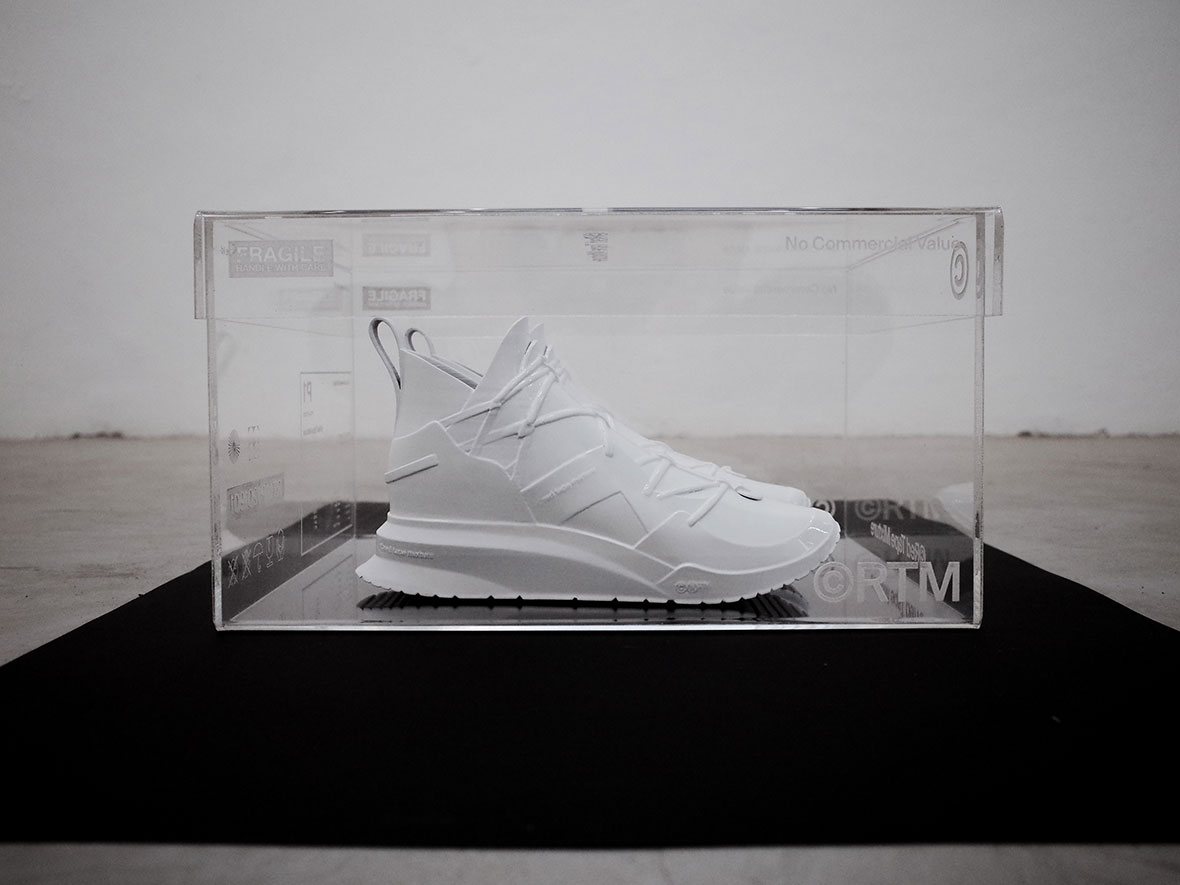
For an artist who views his works as both a product and an artwork, he’s careful to not fully veer into commercial territory. “Merchandising is in a whole different level of commodification,” he says. “Today in Indonesia, art exists on so many different levels, from high art to low-brow, and they’re all valid in their own right—but directly slapping a photo of an artwork to a tote bag or a t-shirt is just derivative. Merchandise does provide accessibility, and that’s great, but for me it needs to be clear that it serves a distinct purpose from the work itself.” His sentiment comes from the phenomenon of people displaying art merchandise as if it’s the actual art piece. To him, merchandise with precise functions, such as wearables, should be used as it’s intended, not be placed in lieu of the original piece. This stance reflects Soepadmo’s appreciation for everyday products.
虽然将自己的作品视为商品和艺术的融合,但 Hilmy 并不想让自己的作品完全被商业侵蚀。他说:“商品化与商业化是完全不同的。现在的印度尼西亚,艺术存在于不同的层面,从高雅到低俗,这些艺术本身都有各自的意义。但是直接将艺术品的照片简单粗暴地印到手袋或 T 恤上,这种衍生品的做法实在太缺乏创意了。商品化拉近了人们与艺术的距离,这很好,但对我来说,需要明确的是,商品与艺术品有着截然不同的目的。” 而之所以有这样的想法,是因为他发现,人们正逐渐将艺术商品当作真正的艺术品来展示。在他看来,那些有着明确功能性的商品,比如衣服,本来就是用来穿戴的,其并不能代替原创的艺术品。这样的观点也反映出 Hilmy 对日常商品的重视。


Packaging design can elevate a product’s value. In Soepadmo’s works, the packaging is an inseparable part of the art. “To take the product analogy further, galleries function as a storefront for artworks,” he says. It’s only appropriate to utilize the concept of packaging in this perspective.” Through the use of packaging, Soepadmo presented his artworks just like a product. The packaging fulfills its fundamental function—it presents factual specifications of the artwork along with its handling and displaying instructions. This unusual element impacts the viewers’ perception of the artwork as a whole, as they convey that art is also a commodity. Rather than being supplementary to its “product”, the packaging in Soepadmo’s works is of equal, if not greater, importance as the paintings inside them
Sealed within vacuum bags or encased in perspex, he intentionally separates his paintings from the viewer Typographic elements detail the specifications of the piece: materials, dimensions, and handling directions, among other details. His choice of materials also factors in durability, a key criterion of a high-quality product. “I wanted to subvert the notion that works of contemporary art are fragile and delicate,” he remarks..
包装设计可以提升产品价值。在 Hilmy 的作品中,包装也作为艺术品不可分割的一部分。他说:“如果把艺术品归类为商品,那画廊就是艺术品的店面。”从这种角度来看,为艺术品加上包装再合理不过。他将自己的艺术作品加上包装,像商品一样被陈列出来。和普通商品包装的处理方式一样,艺术作品的包装上都注明了每件艺术品的基本信息,包括实际规格、创作和陈列说明。这种不同寻常的设计会影响观众对艺术品的整体看法,并传达出一个直接的信息:艺术品也是商品。
对于普通商品而言,包装只作为产品的补充。而 Hilmy 却将包装与内容放在同等重要的位置。他会有意地将画作与观看者分开,作品往往被密封的真空袋或有机玻璃包装,上面用别出心裁的排版描述着作品的规格、材料和尺寸等等说明。同时,他在创作材料的选择上也考虑到耐用性,因为这也是衡量商品品质高低的重要标准之一。Hilmy 说:“人们认为当代艺术作品都是精致脆弱的,我想用我的作品挑战这种观念。”
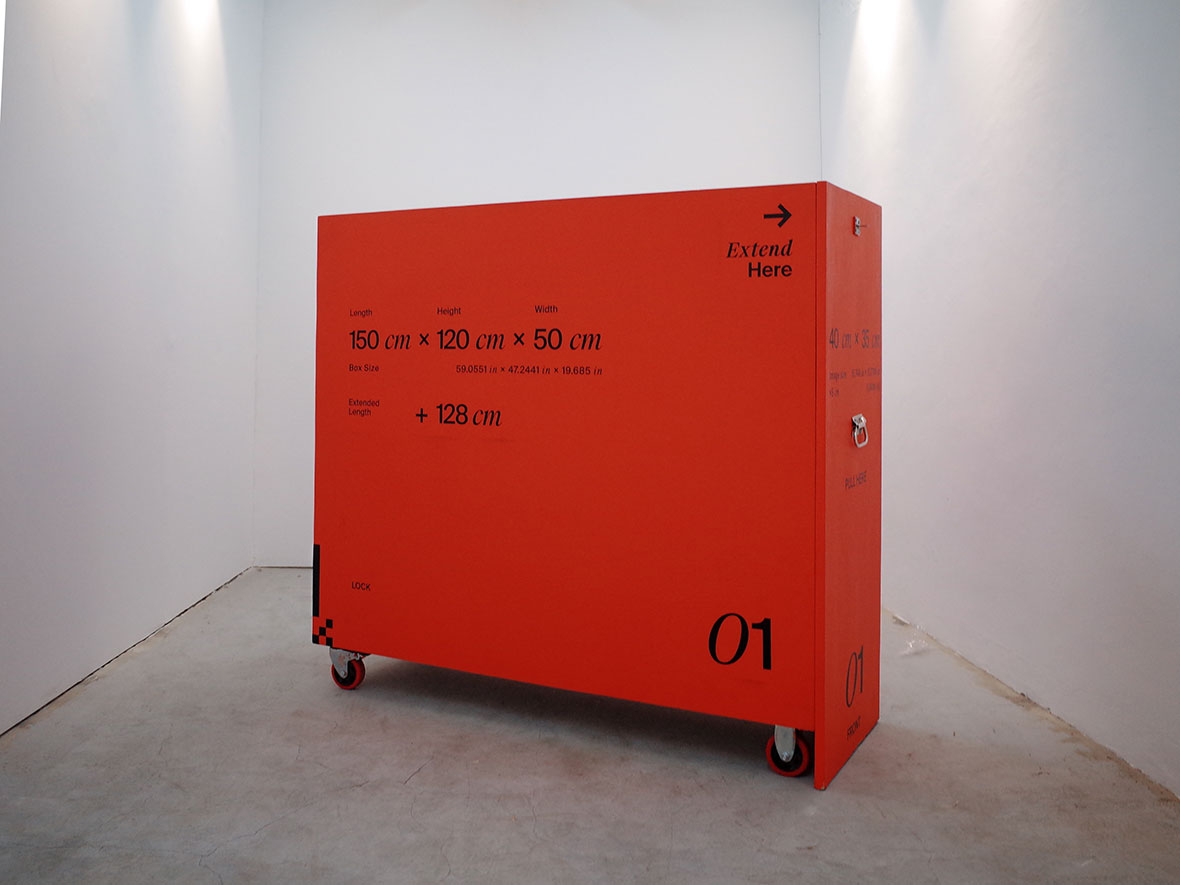

Soepadmo’s works also come in a proper bundle, complete with a certificate of authenticity, a manual book, and small instruments to display the artwork—specially selected screws, nylon plugs, and nylon strings being some of them. Through comprehensive information and tools, Soepadmo makes it easier for galleries and collectors to display the pieces as he envisioned.
He is aware that his approach is very much informed by his perspective as a designer, and even more so as a consumer. “I feel it’s confining to approach your work by only one perspective,” he says. “The barriers between what we do is disappearing, and to embrace all its shift and duality is much more interesting.”
有时,Hilmy 的作品还会被打包在一起,里面附带着正品证明、实用手册和一些用于展示艺术品的小工具,包括螺钉、尼龙塞和尼龙绳。有了这些全面的信息和工具,画廊和收藏家可以按照 Hilmy 的设想更轻松地将作品展示而出。
Hilmy 认识到,自己的作品是需要同时站在设计师和消费者的角度来进行创作的。他说:“如果单从一个角度来构思作品太有局限性,商品和艺术品之间的界限正在逐渐消失,接受这种转变和双重性也许会更有意思。”
Like our stories? Follow us on Facebook and Instagram.
Website: hpsoepadmo.pb.studio
Instagram: @hpsoepadmo
Contributor: Almer Mikhail
Chinese Translation: Olivia Li

